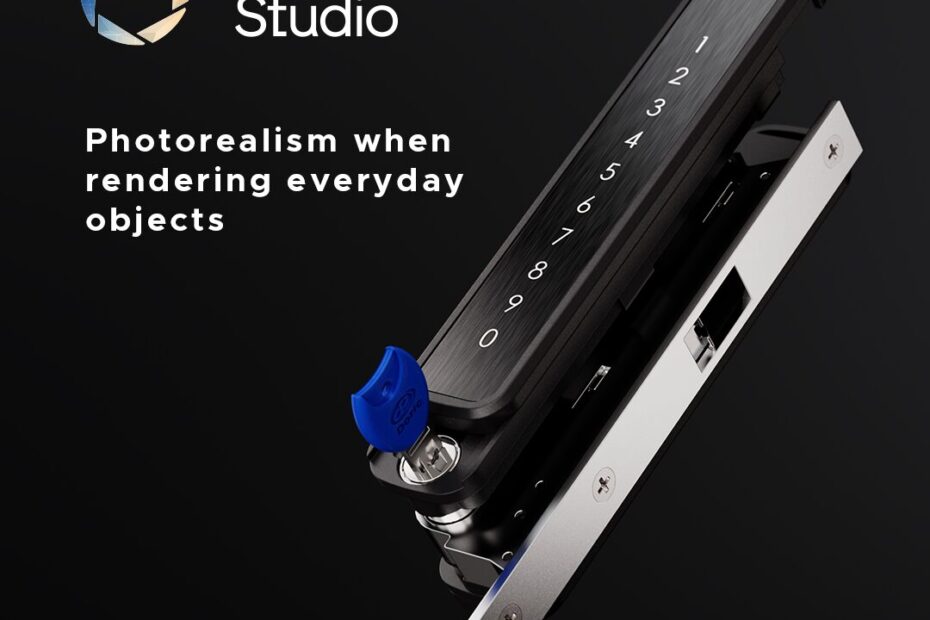Among the many creative and diverse entries to our 2025 KeyShot Challenge competition were two submitted by Edward Poropat, Industrial Designer at Alchin Long Group that caught our eye. In this article, Edward provides some background on his two submissions, explaining each design and the processes he went through to create his fantastic renders.
Submission 1 – Smart lock
“The design looks really good, but now, make it cool…”
Few words, but they sum up my entire process. It’s about taking an ordinary, everyday object and turning it into something new and exciting.

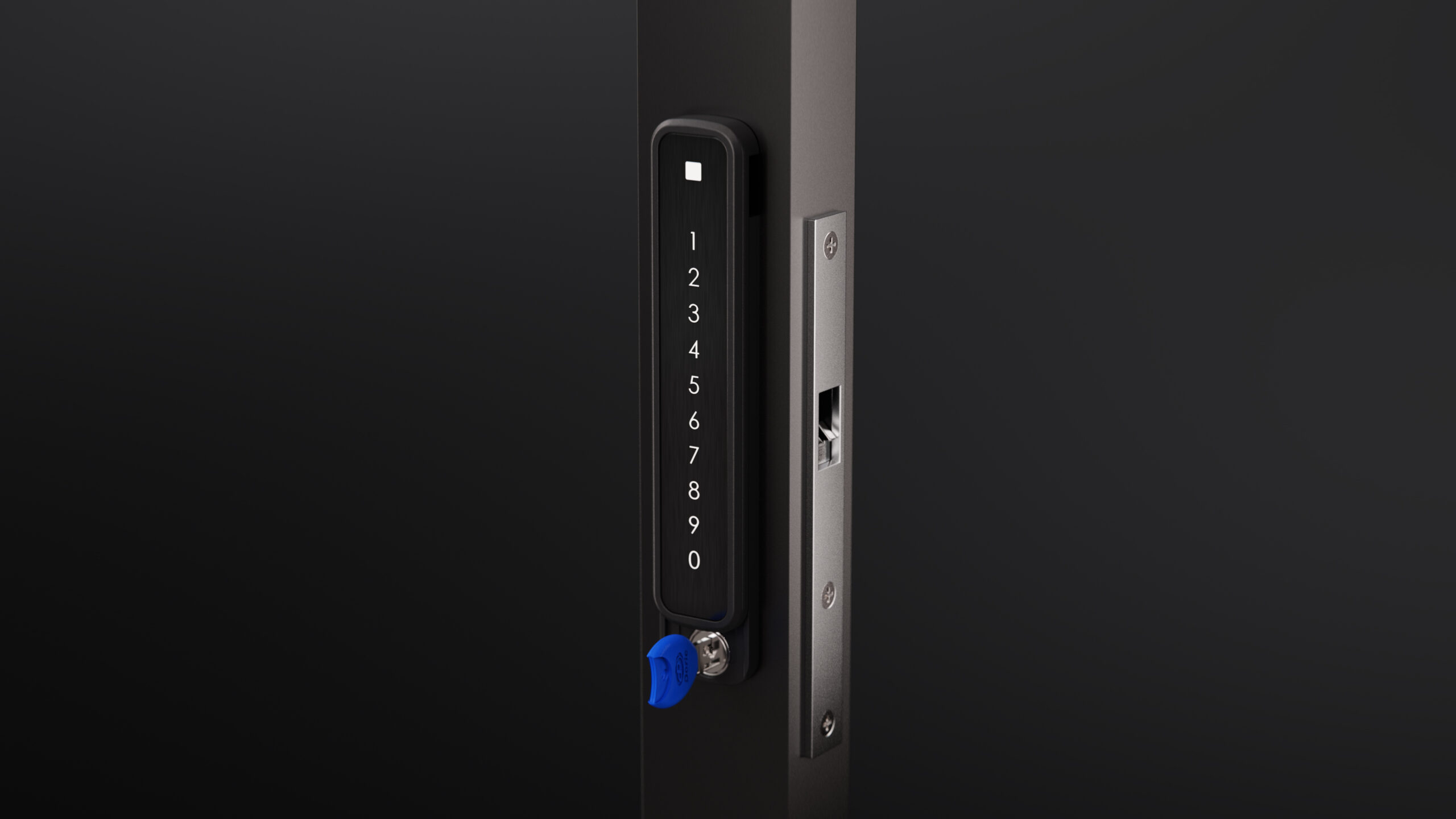
As an industrial designer, where we start our designs often looks nothing like where we finish. Originally during the early stages of concept development, after many dodgy sketches, block CAD models and quick keyshot renders, the idea was to go with something low profile, sleek and pair-able with any other furniture/handle.
During the ideation phase, Keyshot becomes my go-to tool. I can quickly mock up concepts in 3D CAD, send them to Keyshot, and experiment with colours, materials, and finishes (CMF). This is essential for communicating ideas clearly and making quick adjustments on the fly — because let’s face it, someone always wants to see it in a different colour.
With a screen now selected and the design entering its prototyping stages, it began to evolve further. What seemed like endless iterations of 3D printed enclosures, tinkering with mechanisms, still the question remained: “how to make this truly innovative and exciting” for a company that’s been in the business of making hardware for well over 50 years. The design in its current had a major drawback: it looked like a touch screen with a cylinder tacked onto the bottom.
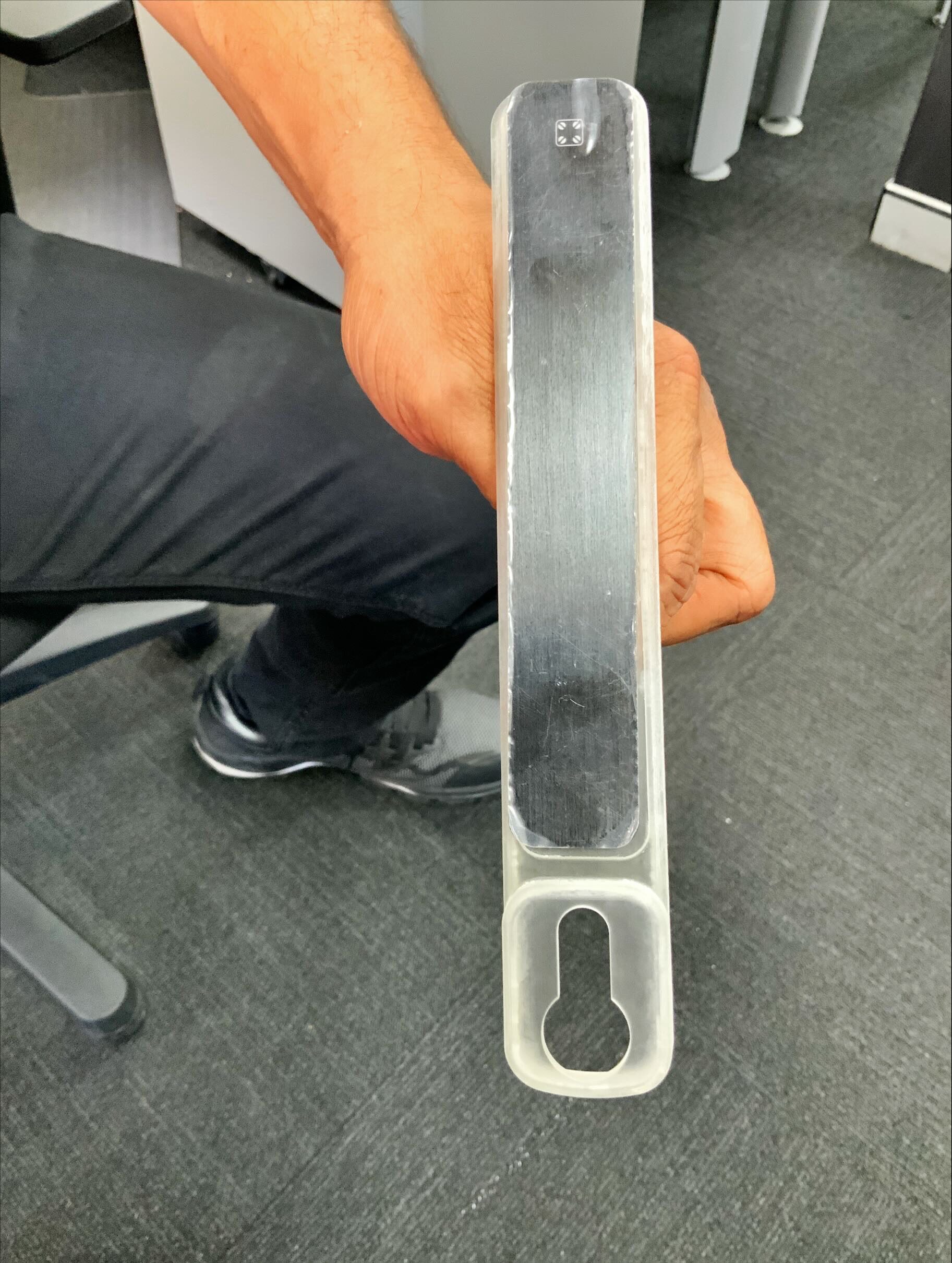
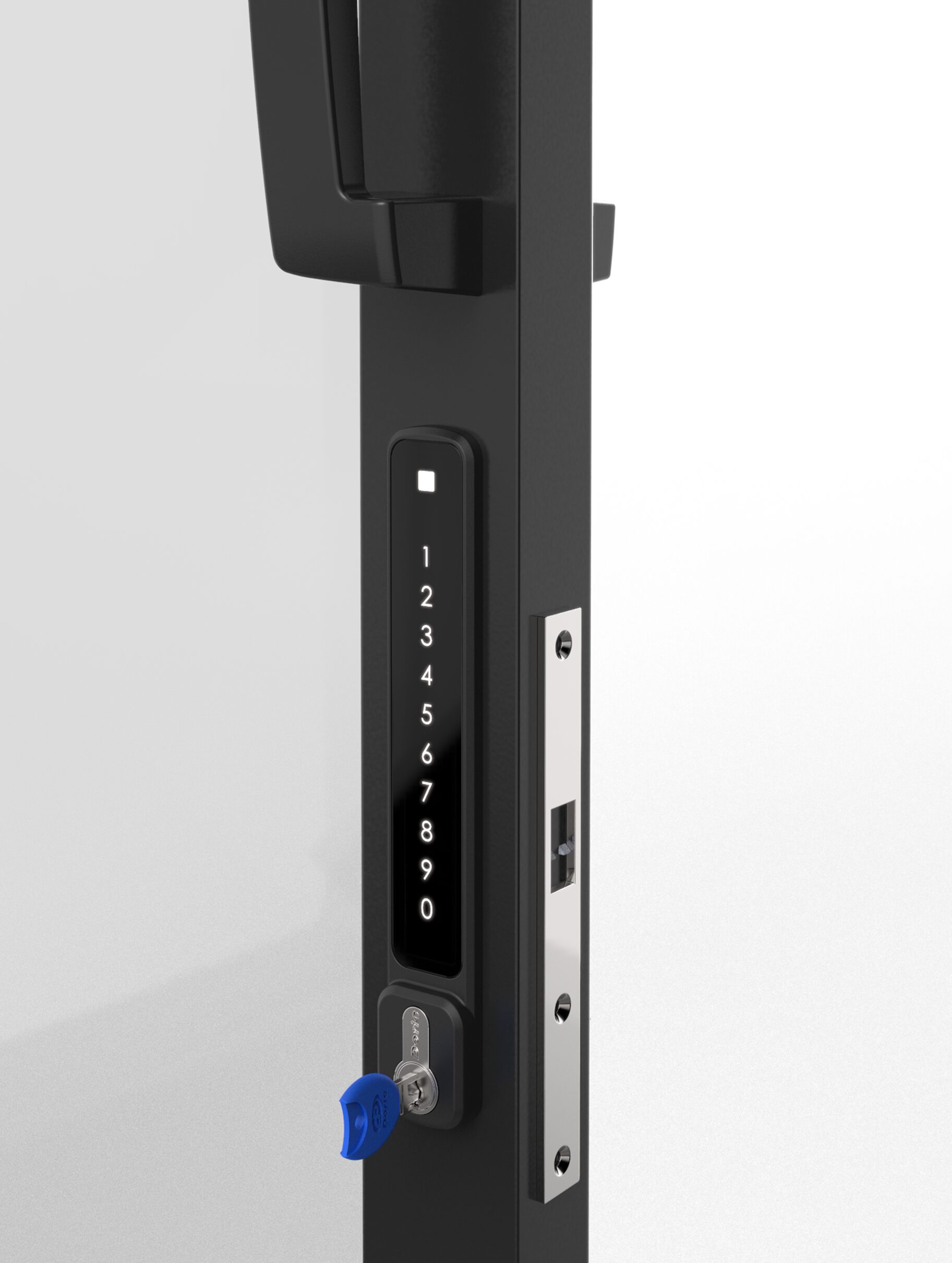
This is where I decided to pivot my design, from the low and sleek profile, to one that can highlight the new tech, with a solid hardware backing. And so, my latest design was conceived. Using a simple touch interface on a powder-coated aluminium body, this lock creates a simple yet satisfying interface for a sliding door.
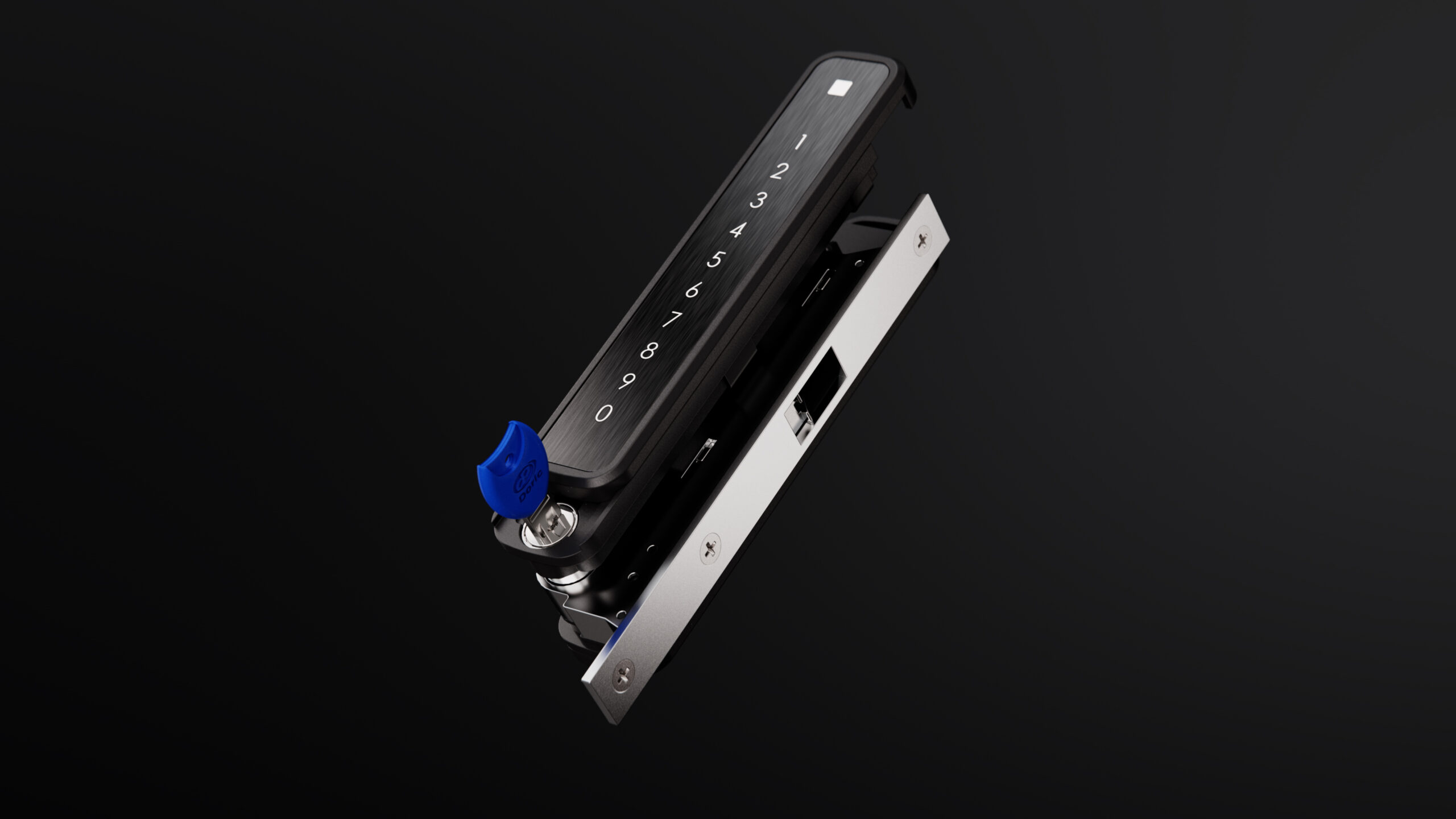
For the final render, I used our CNC prototype as the primary reference. It allowed me to capture all the subtle details of a machined part — from the imperfect bumps of the powder coat, the rough edges, to the soft glow of the LEDs. Keyshot’s procedural textures are excellent for this. The configurability and flexibility of this makes for such an efficient workflow.
Submission 2 – Shaving Brush
After the deadline for the May Keyshot challenge was extended, I looked around through my past projects for some inspiration. I came across this old shaving brush experiment that I made a few years ago when Keyshot 10 was released with a new fuzz feature. I took a shaving brush that I had, made a quick base in 3D CAD and used Keyshot to begin my experiments. But that was years ago — it’s 2025 now, and time to improve it.
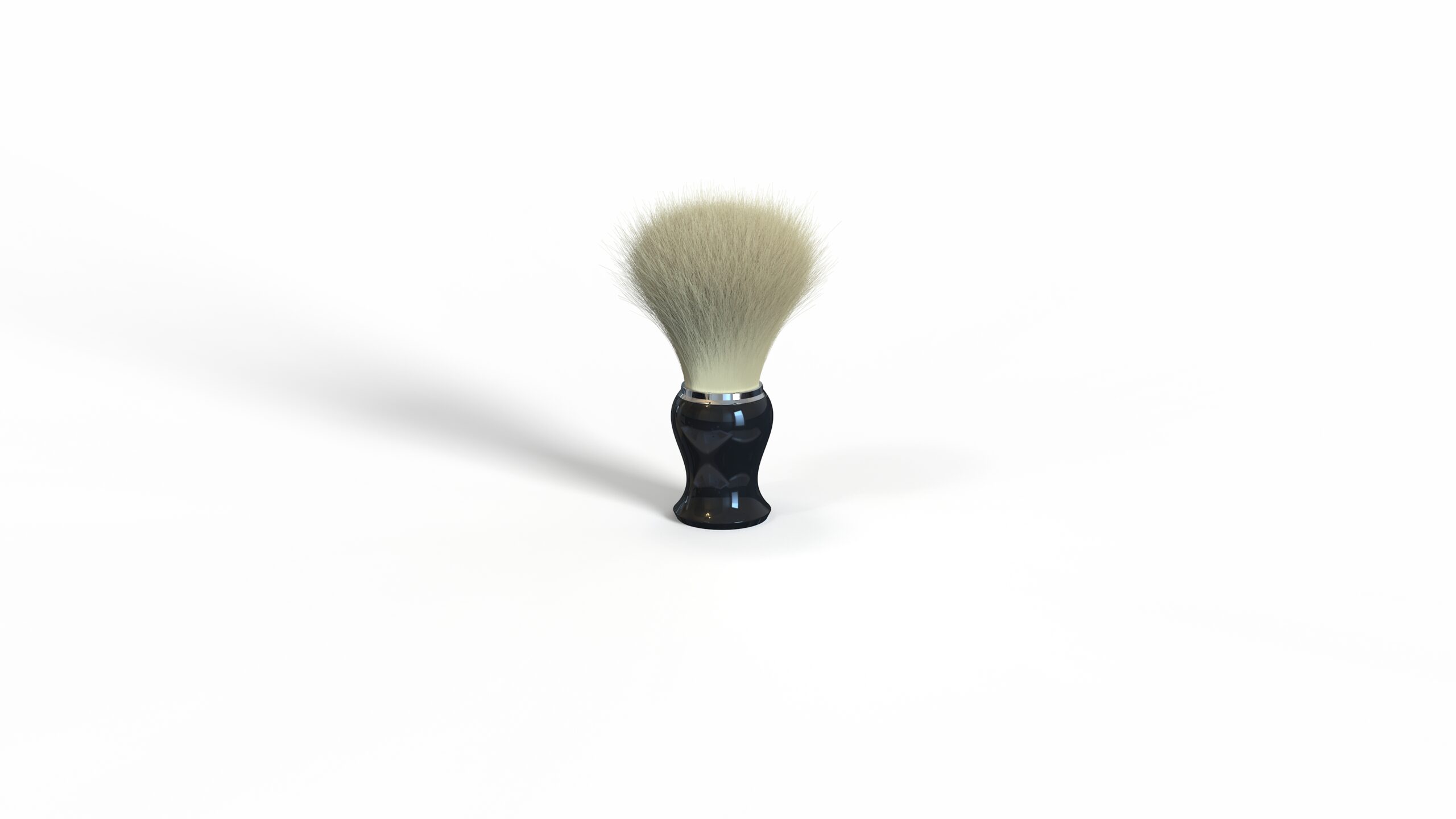
Using a new brush as a reference, I updated the colours and brush textures. But the scene looked a little empty, so it was time to complete the full shaving kit. Next came the bowl and blade. Based on a bowl and razor blade I had on hand, I was able to quickly mock up some models to add to my scene.
When it came to mocking up the razor, Keyshot has a feature, hidden in plain sight: It pointed out bad surfaces in my model. Something that I had overlooked. Something that if taken to production, would have shown up as a ‘crease’ if machined into a solid steel piece. This gave me the chance to go back to the drawing board and fix my mistakes.
This time, I set myself apart by ditching HDRI environments and lighting the scene only with physical lights. Keyshot’s easy to use lights (mainly area lights and spotlights), allowed for a surprisingly quick way to light up my scene. The trickiest part was to use the lights to accentuate the curves on the shiny black handle, but with Keyshot’s new light position tools, everything lined up quickly and easily.
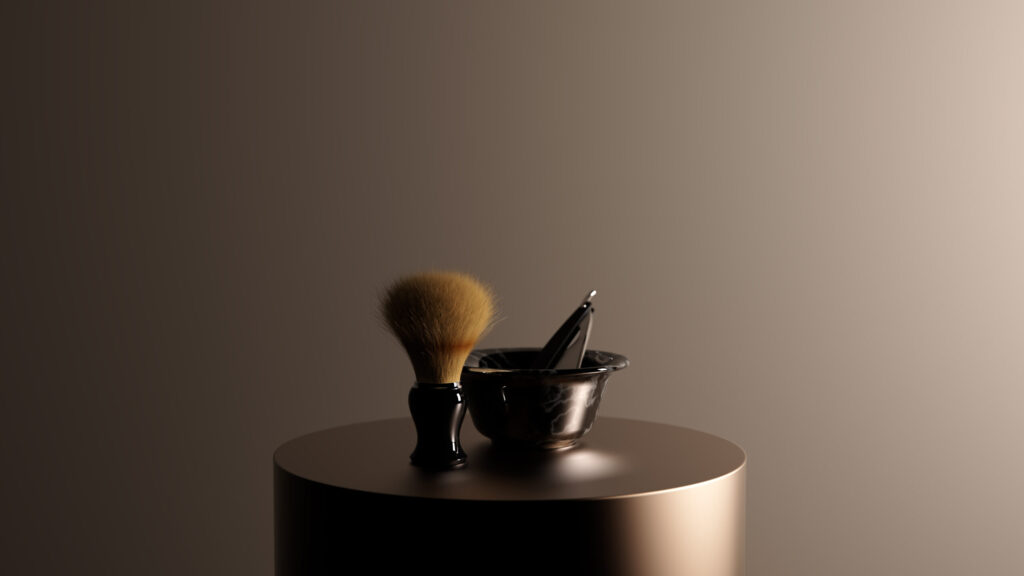
Thanks to Edward and all of the participants of the 2025 LEAP KeyShot Challenge from the team at LEAP. To see more top entries and hear from our judging panel, read our winners announcement post. We hope to see your own submissions in next year’s competition!

